Are you in a dilemma about using flat paint for your bathroom renovation? Using wrong paint type can lead to problems, such as mold and mildew growth. This blog aims to provide clear insights on whether flat paint is safe for bathroom use, considering factors like moisture absorption and mold resistance.
Ready to learn more? Let’s dive into the specifics.
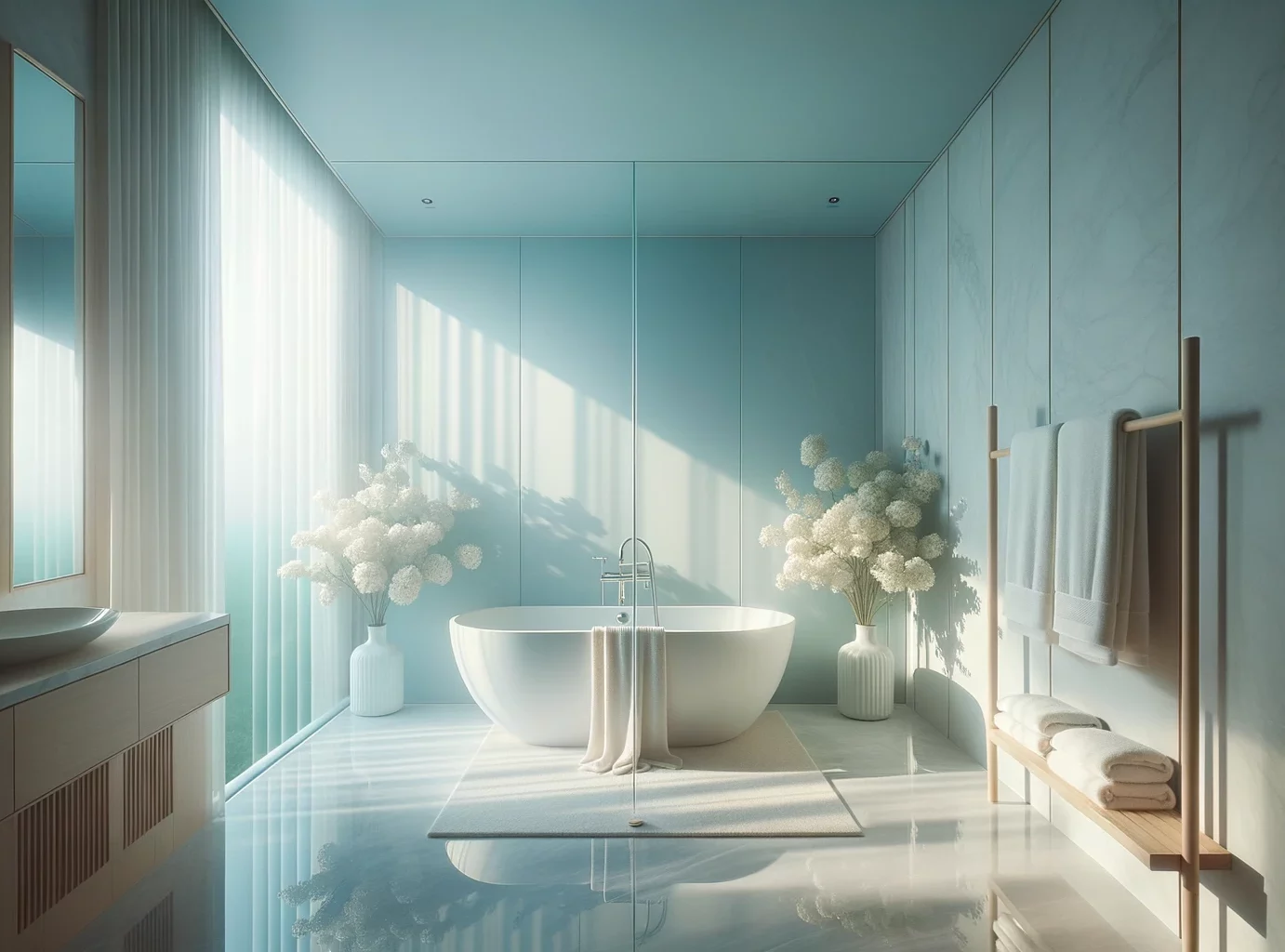
Key Takeaways
- Flat paint is not recommended for use in bathrooms due to its tendency to absorb moisture, which can lead to mold and mildew growth.
- Consider using low-sheen options like eggshell or satin finishes, or more durable options like semi-gloss or high gloss paints, which are better suited for high-moisture areas like bathrooms.
- Proper preparation and maintenance are important when painting a bathroom, including cleaning the surface thoroughly, priming the walls, and addressing any signs of mold or mildew growth promptly.
Understanding Paint Sheens
Paint sheens determine the glossiness or shininess of a paint finish, and understanding how they work is crucial in choosing the right type of paint for your bathroom.

How paint sheens work
The magic of paint sheens lies in the amount of light they reflect. The lower the sheen, the less light is reflected and the more color appears to be absorbed. Flat or matte sheens absorb most light, providing a soft and non-reflective finish ideal for hiding wall imperfections.
Moving along the spectrum, eggshell and satin sheens reflect more light creating a slightly glossy look but still maintaining some texture. Semi-gloss and high gloss paints are at the top end of this scale reflecting maximum amounts of light which highlight color but can also show surface flaws due to their mirror-like finish.
It’s important to note that higher-sheen paints tend to be more durable and easier to clean than their low-sheen counterparts.
Types of paint sheens
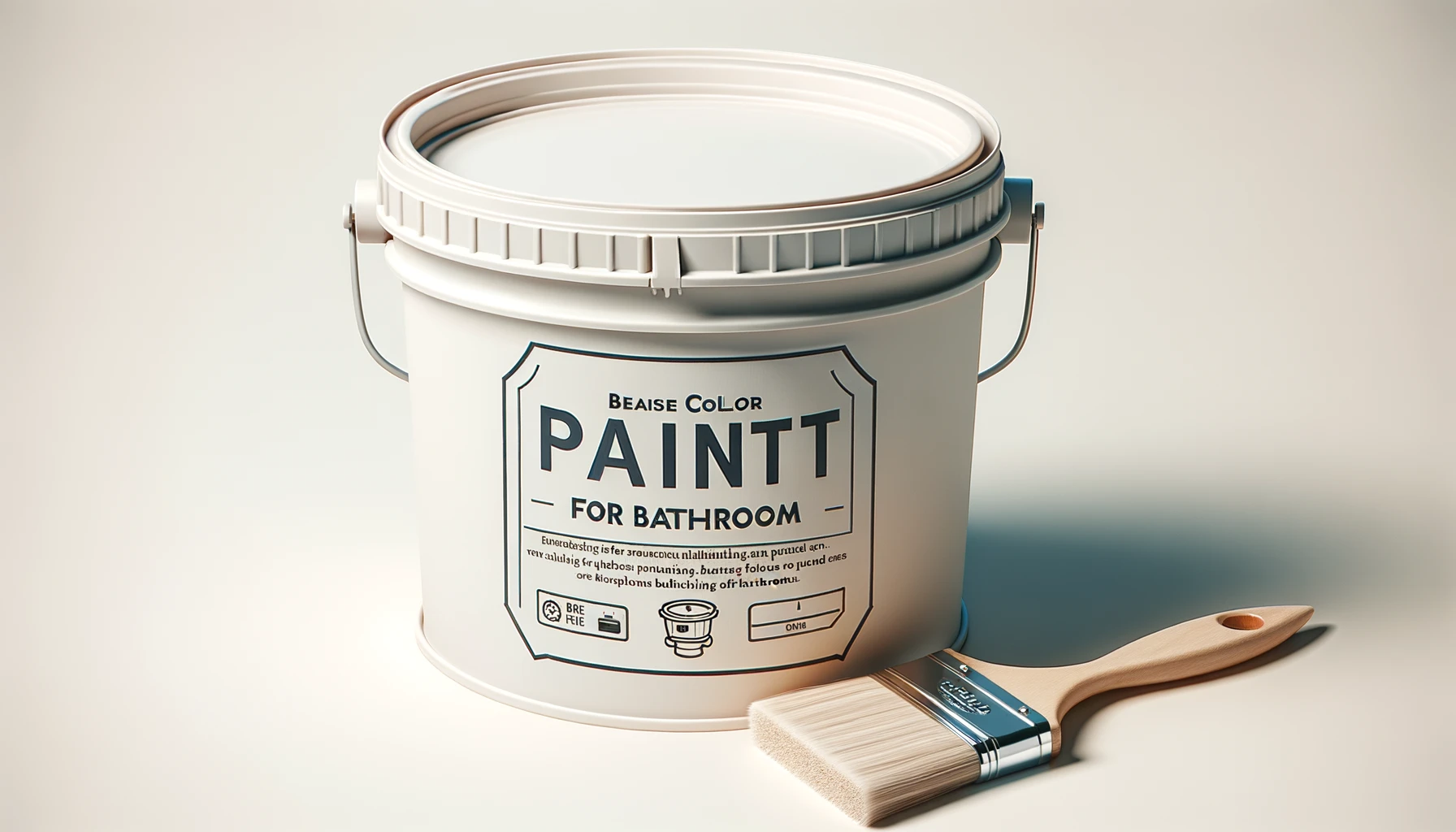
Different types of paint sheens are available for you to choose from when painting your bathroom. Each type has its own unique characteristics and advantages.
First, there is flat or matte paint, which provides a smooth and non-reflective finish. This type of paint is often used in bedrooms or living areas where a more subtle effect is desired.
However, it is not recommended for bathrooms as it can absorb moisture and promote mold or mildew growth.
Next, there are low-sheen options such as eggshell and satin finishes. These paints have a slight luster that adds depth to the walls without being overly glossy. They are also easier to clean than flat paint and can resist moisture to some extent.
For a more durable option, consider using semi-gloss or high gloss paints in your bathroom. These finishes have a shiny appearance that reflects light and creates a luxurious appeal.
Factors to Consider when Choosing Bathroom Paint
Consider the importance of mold and mildew resistance, as well as factors like moisture levels and ventilation in your bathroom when choosing paint.

Mold and mildew resistance
Flat or matte paint is not recommended for use in bathrooms due to their tendency to be moist environments that can promote mold and mildew growth. These types of paint finishes are softer and more porous, making them more susceptible to absorbing moisture.
This increased moisture absorption increases the risk of mold and mildew forming on the painted surfaces. To prevent this issue, it is best to choose a paint with mold and mildew resistance specifically designed for bathrooms.
Semi-gloss paints are a good option as they have a higher sheen and are easier to clean, making them less prone to mold growth. By selecting a paint with built-in protection against mold and mildew, you can ensure that your bathroom stays looking fresh and clean without any unwanted fungal growth.
Moisture and ventilation
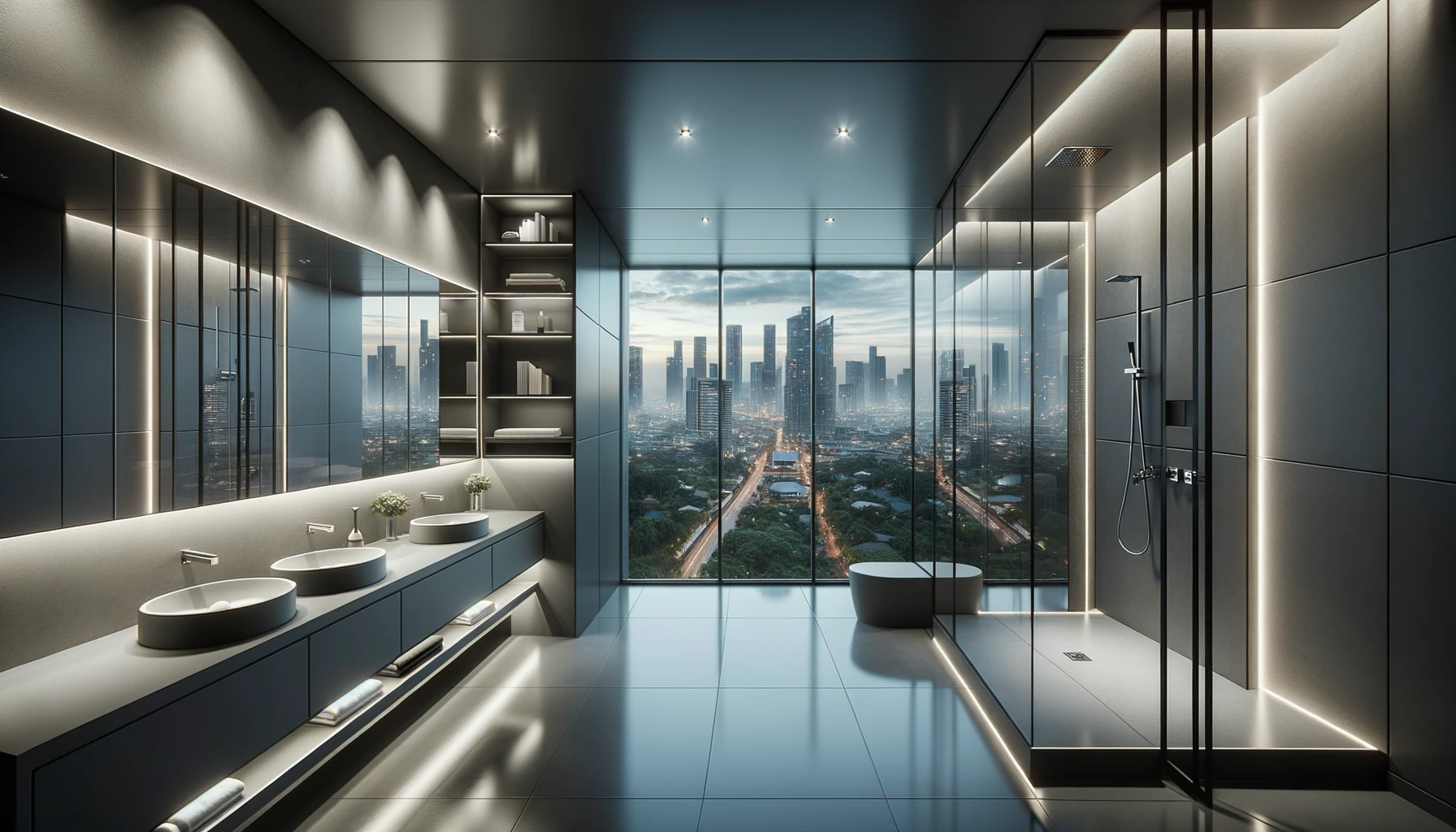
Proper moisture control and ventilation are crucial factors to consider when choosing paint for your bathroom. Since bathrooms are naturally damp places, it’s important to select a paint that can withstand high humidity levels.
Flat or matte paint is not recommended for use in bathrooms due to their tendency to absorb moisture, which can lead to the growth of mold and mildew. However, if your bathroom has good ventilation and water doesn’t get all over the walls, using flat paint may still be an option.
It’s essential to assess the specific conditions of your bathroom before deciding on the type of paint that will work best in terms of moisture resistance.
Preventing peeling
To prevent peeling in your bathroom, it is important to choose the right type of paint and prepare the surfaces properly. Opt for high-quality moisture-resistant paint that is specifically designed for bathrooms.
This will help protect against excess moisture and minimize the chances of peeling. Before painting, make sure to clean and dry the walls thoroughly. Remove any existing peeling or flaking paint and sand down rough areas.
Apply a primer before painting to ensure better adhesion and longevity of the new coat. Additionally, maintaining good ventilation in your bathroom can also help prevent peeling by reducing the amount of moisture in the air.
Pros and Cons of Flat Paint in Bathrooms
Using flat paint in bathrooms has its benefits, such as a matte finish that can create a luxurious appeal and hide imperfections on walls and ceilings. However, it is important to consider potential issues like moisture retention and difficulty of cleaning.

Benefits of using flat paint
Using flat paint in a bathroom does have some benefits. Flat paint provides a smooth, matte finish that can give your bathroom a sophisticated and luxurious appeal. It also hides imperfections on the walls better than other sheens, making it great for older bathrooms or those with textured surfaces.
Additionally, flat paint tends to be less expensive than higher-gloss options, making it a budget-friendly choice. However, keep in mind that using flat paint in bathrooms does come with potential drawbacks which will be discussed next.
Potential issues with using flat paint
Using flat paint in a bathroom can present several potential issues. Firstly, flat paint is more prone to absorbing moisture compared to other sheens. This can lead to the growth of mold and mildew, which thrive in moist environments.
Additionally, flat paint is less durable and may not hold up well against regular cleaning or scrubbing, making it difficult to maintain its appearance over time. It’s important to consider these factors before choosing flat paint for your bathroom walls or surfaces that come into direct contact with water or moisture.
Alternative Options for Bathroom Paint
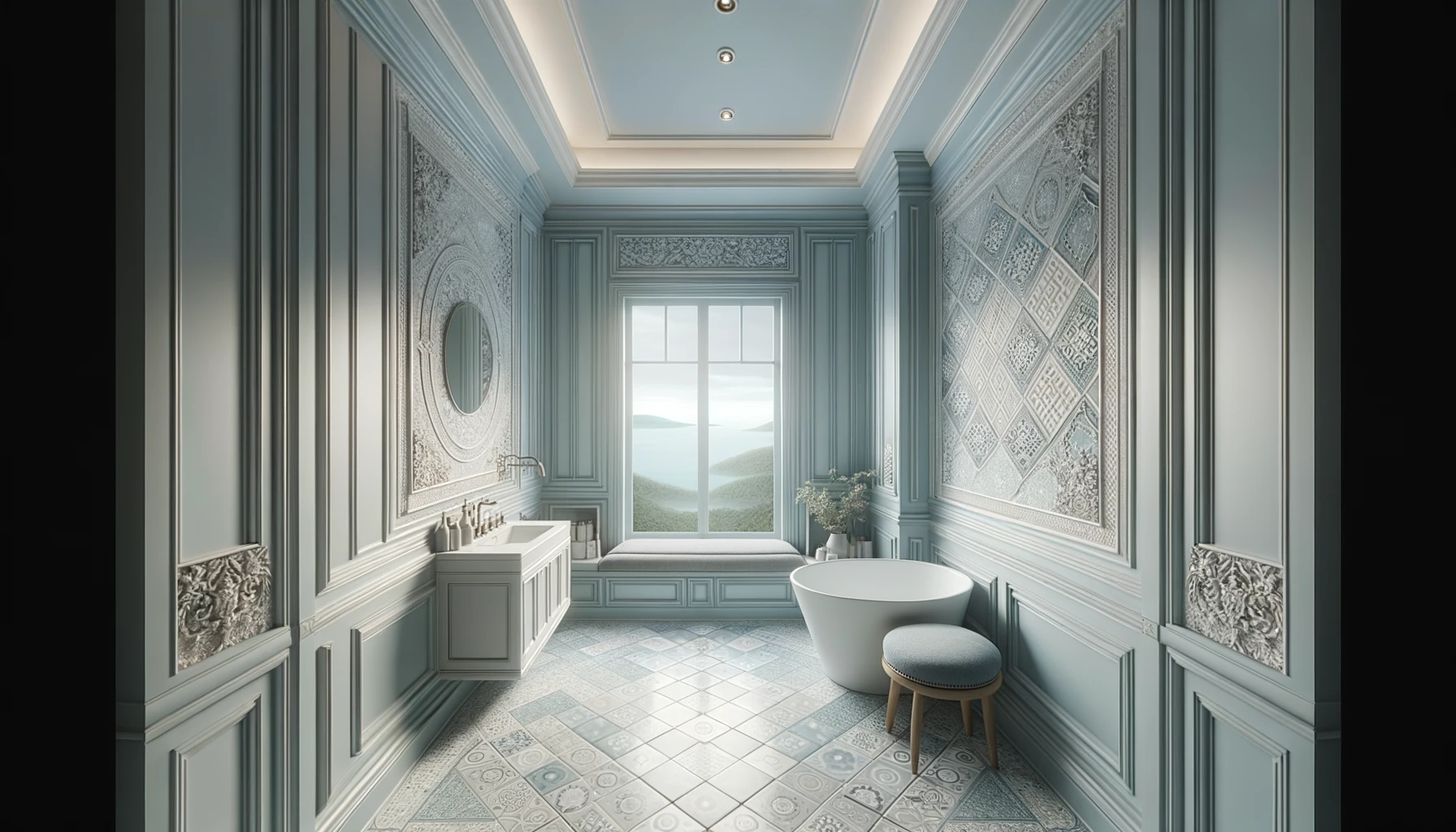
When it comes to choosing paint for your bathroom, there are several alternative options that provide better moisture resistance than flat paint. Look for paints with finishes specifically designed for bathrooms, such as satin or semi-gloss, which offer increased durability and mold and mildew resistance.
Best paint sheens for bathrooms
When choosing the best paint sheen for your bathroom, it’s important to consider durability and moisture resistance. Semi-gloss paint is a popular choice as it holds up well in humid environments and is easy to clean.
Satin finishes also work well in bathrooms, offering a subtle shine while being resistant to mold and mildew. High gloss paints are another option, providing a sleek and shiny look that can withstand moisture.
Flat or matte paints should be avoided in bathrooms due to their tendency to absorb moisture and promote mold growth.
Recommended brands and products
When it comes to choosing the right paint for your bathroom, there are several recommended brands and products that you can consider. Benjamin Moore Aura Bath & Spa is a popular choice as it offers a matte finish and is specifically designed for high-moisture areas.
Sherwin-Williams Emerald Interior Acrylic Latex Paint is another great option known for its durability and mildew resistance. If you prefer eco-friendly options, consider using Behr Premium Plus Ultra or Valspar Reserve, both of which offer low VOC (volatile organic compounds) content.
These brands and products have been trusted by homeowners and professionals alike for their quality and performance in bathroom environments.
Importance of proper preparation and maintenance
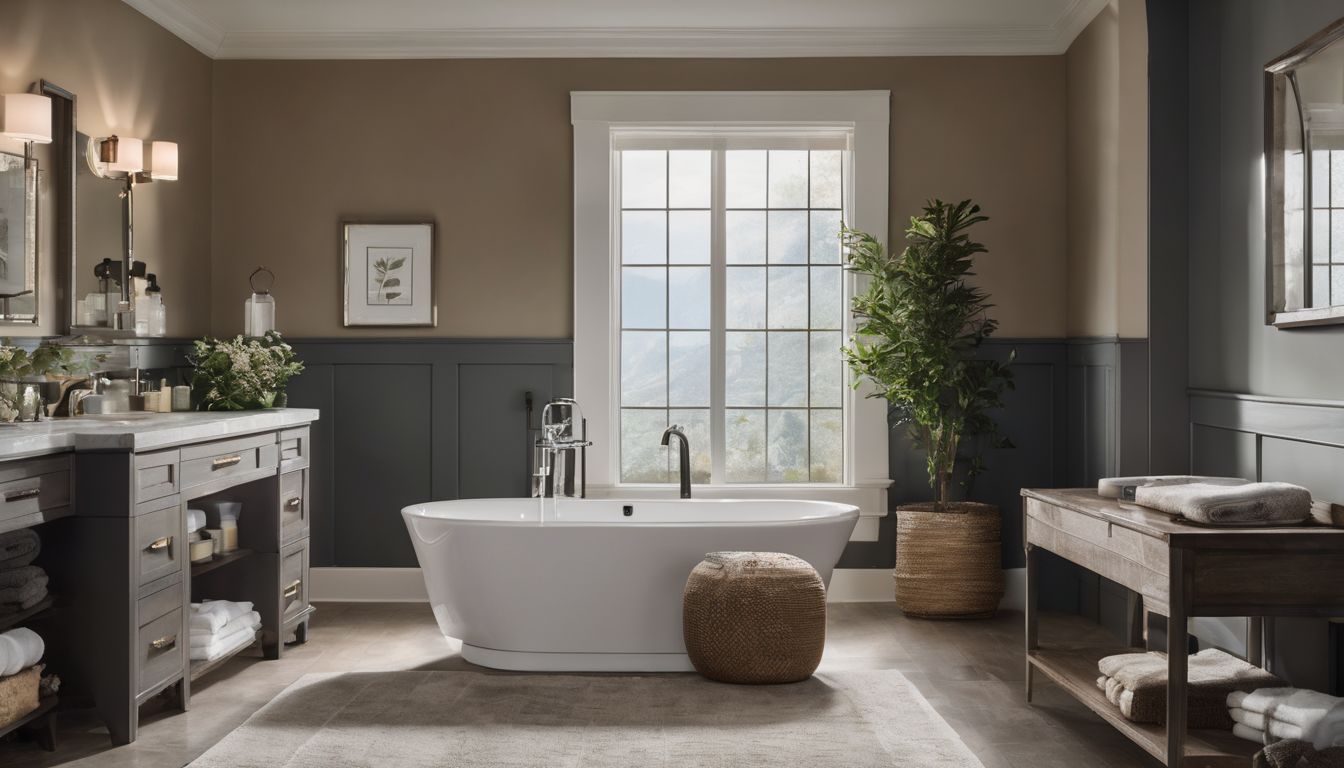
Proper preparation and maintenance are crucial when it comes to painting a bathroom. Before applying any paint, make sure the surface is clean and free from dirt, grease, and mold.
Properly sanding and priming the walls will help create a smooth base for the paint to adhere to. Additionally, regular maintenance is important to ensure that the paint stays in good condition over time.
Be sure to promptly address any signs of mold or mildew growth and invest in proper ventilation to prevent excess moisture buildup. By taking these steps, you can prolong the life of your bathroom paint and keep it looking fresh for years to come.
Conclusion
In conclusion, while flat paint may provide a desirable matte finish, it is not recommended for use in bathrooms due to the moisture and potential for mold or mildew growth. It is best to opt for more durable options like semi-gloss paint that can withstand bathroom conditions and are easier to clean.
Consider the specific needs of your bathroom when choosing the right paint sheen to ensure long-lasting results.
FAQs
1. Can you use flat paint in a bathroom safely?
Despite its luxury appeal, using flat paint as it is in bathrooms might not be safe due to dampness and exposure to water from showers.
2. What type of paint is recommended for bathroom walls?
Moisture-resistant, mold-resistant or dampness-proof paints are highly recommended for bathroom walls due to their ability to withstand the humid environment.
3. Is there any special treatment needed before painting shower tiles?
Yes! It’s best to apply an anti-mould agent on your shower tiles before painting them with a suitable and durable waterproof paint for long-lasting results.
4. How does moisture-resistant paint benefit my bathroom remodel?
Moisture-proof or water-resistant paints protect your new designs from being damaged by mildew and mould while also enhancing your chosen bathroom color schemes.
5. Can I add mildew-resistant features to my existing flat painted ceiling?
Yes, you can layer your already painted ceiling with mildew-resistant paint specifically designed for ceilings which helps create a healthy, dry space in your newly remodeled bathroom.